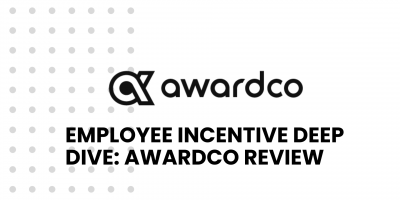
Company Culture: Examples, Types & Importance
Gain valuable insights into diverse cultural examples and understand their pivotal role in fostering a thriving, motivated workforce.

Good company culture keeps employees happy, customers satisfied, and turnover to a minimum.
By definition, a company’s culture is characterized as a collection of shared values, goals, attitudes, and behaviors that define the organization. And good company culture isn’t created overnight. It demands investment and strategizing to achieve a sustainable outcome that delivers less turnover and more profit.
Building an organization with a strong company culture has a considerable ROI. The question is: How much work has to be put behind creating exceptional company culture?
To put it simply, it takes a lot of work to build a company culture. If management doesn’t focus on developing culture by deliberate design, it defaults to taking on the personality of the most vocal employees. That is not always the best outcome.
On a single day, 20,000 people walked out of Google’s offices in protest of unfair and unequal treatment of women at the company. The demonstration was dramatic and headline-grabbing. The message was: “We will no longer check our identity and values at the workplace door.”
While brave, the Google employees felt safe enough to organize collectively. Not everyone feels safe enough to protest and walk out that openly. These employees knew that even if they lost their jobs, they would still be employable somewhere else based on the prestige of their current roles.
However, walkouts happen often. When people feel psychologically unsafe, they protest quietly, sometimes even silently or subconsciously. They stop trying as hard at work. Or they might subtly undermine leadership and act against the organization’s objectives just a little. They become disengaged. Experienced managers handle this in two different ways.

When there is little to no communication and employees don’t feel free to express themselves and their ideas, they respond to that by closing down. If employees feel that they don’t belong or are unimportant, the first reaction is not caring as much about the work and the people around them.
To avoid this pitfall, managers need to invite people to speak up at work because making invitations a routine part lays the groundwork for when people have to speak up on issues that are hard for management to hear.
In the previous example from Google’s headquarters, the CEO Sundar Pichai send an e-mail to the whole company.
He said, “I understand the anger and disappointment that many of you feel … I feel it too. I’m fully committed to making progress in an issue that has persisted for far too long in our society, and yes, here at Google too.”
Then he informed managers of the planned activities and reassured the protesters that they would have the support they needed. However, checkouts are even harder to notice and address because they are not so upfront as a protest. Therefore, managers must ask questions proactively and invite input regularly.
Words without action breed cynicism.
They open the door for future layouts and walkouts. Having open lines of communication is crucial. In the dialog, both parties need to try to resolve their differences. Even if it is not ideal for any party involved, it might be acceptable to all.
It is understandable that corporate gifts for employees are a great token of appreciation and exquisite conversation piece. However, they are not what company culture is all about, and they do not differentiate a good company from a bad one. In fact, five different types of company culture are most common in the business world, and they all have their unique approach to making employees feel appreciated and rewarded.
These are the five different levels of company culture, starting from the basic and primitive to the one everybody strives for.
In this culture, the well-known phrase is, “It wasn’t me.” “It was their fault,” is also popular. Trust diminishes, and people are scared to do anything. There is no innovation because there is too much fear. Employees wait for managers to tell them what to do.
There is cohesiveness in some departments, but the departments don’t cooperate and talk to each other. In this culture, nobody is collaborating the way that they should, and everybody gets frustrated. Therefore, they forget about the organization’s greater purpose, and the company objectives are not met.
In this organization, goals are met, money is earned, but the general understanding is, “Why do we have to change anything? Why do we have to do anything extra? It is fine!” In this culture, innovation doesn’t really happen because people are complacent. This type of culture brings the company into mediocracy, never really reaching for anything more significant, never really feeling the potential of being extra valuable because the employees are not driven.
A well-established brand can be very appealing to employees. They believe in it and identify with the branding. In this culture, there is more innovation because employees want to improve the product. They are invested in what the organization is trying to do. The company recognizes this employee behavior and invests in employee reward programs for it or recognitions.
A leadership-enriched culture is hard to achieve, but it’s vital for growth. When leaders teach other leaders, it doesn’t matter who is doing what. The only thing that matters is the objective.
This gives everyone in the organization value and possibilities. Anyone can take charge of a project. The idea is that every company must strive to go up the scale gradually. This is, in essence, an informal mentoring program that encourages employees to help one another grow. Building a company culture that makes employees choose their company every day of the week is the ultimate goal.
It’s vital to have a clear grasp of where the company is now and what type of culture is nurtured currently. It is not easy to move up the scale. Company culture evolution takes time.
Browse our curated list of vendors to find the best solution for your needs.
Subscribe to our newsletter for the latest trends, expert tips, and workplace insights!

Gain valuable insights into diverse cultural examples and understand their pivotal role in fostering a thriving, motivated workforce.
From improved scheduling to increased productivity – explore why implementing an effective time-tracking and attendance system can be vital in the workplace.

Gross misconduct is one of the reasons why companies must have employee handbooks that clearly distinguish between appropriate and inappropriate behavior and outline the repercussions in the event of misconduct.

As the majority of the workforce remains disengaged, enhancing employee recognition through incentive platforms like Awardco emerges as a solution.
Used by most of the top employee benefits consultants in the US, Shortlister is where you can find, research and select HR and benefits vendors for your clients.
Shortlister helps you reach your ideal prospects. Claim your free account to control your message and receive employer, consultant and health plan leads.